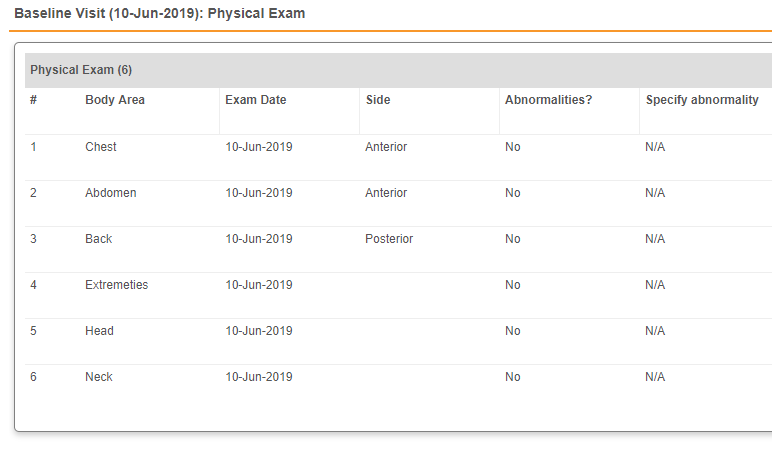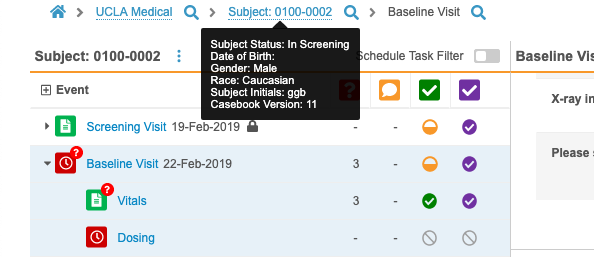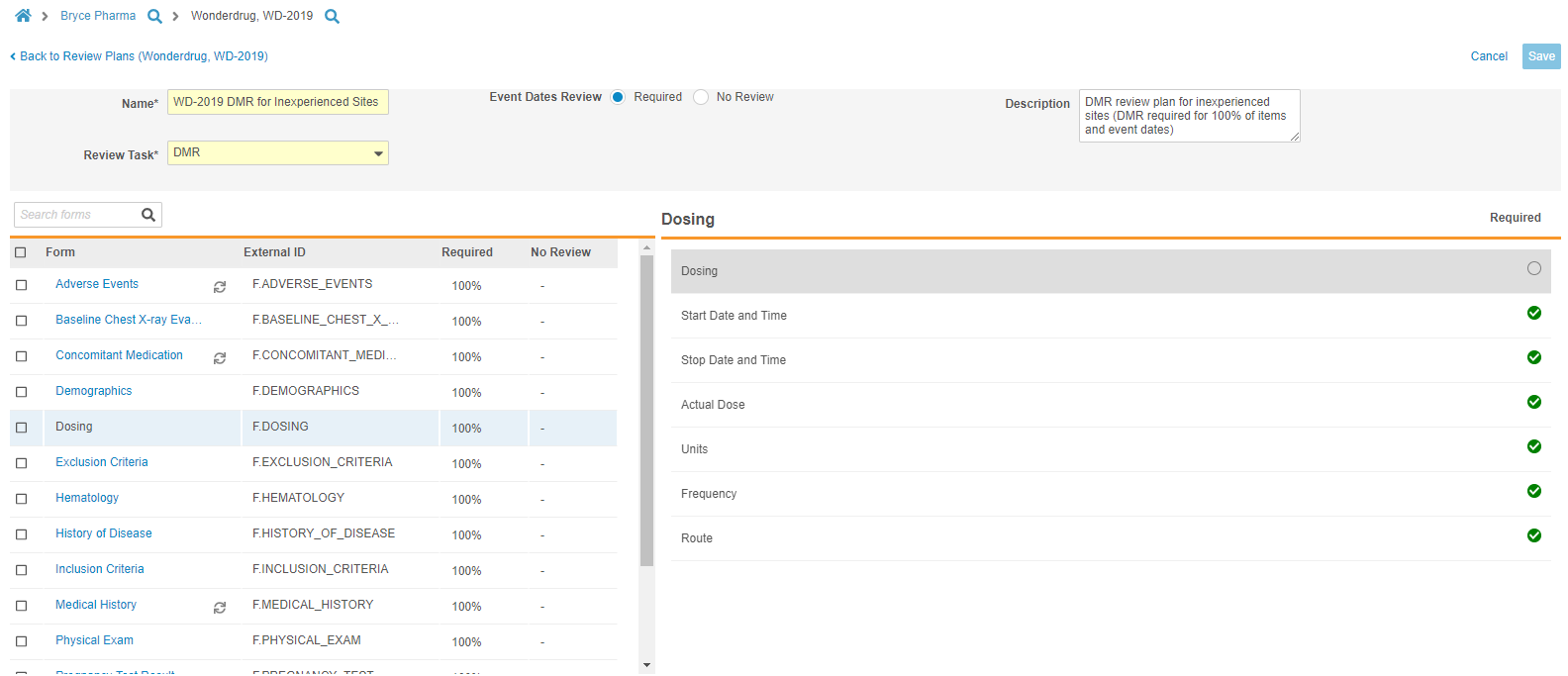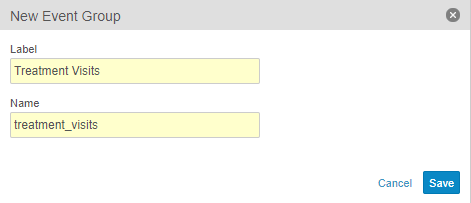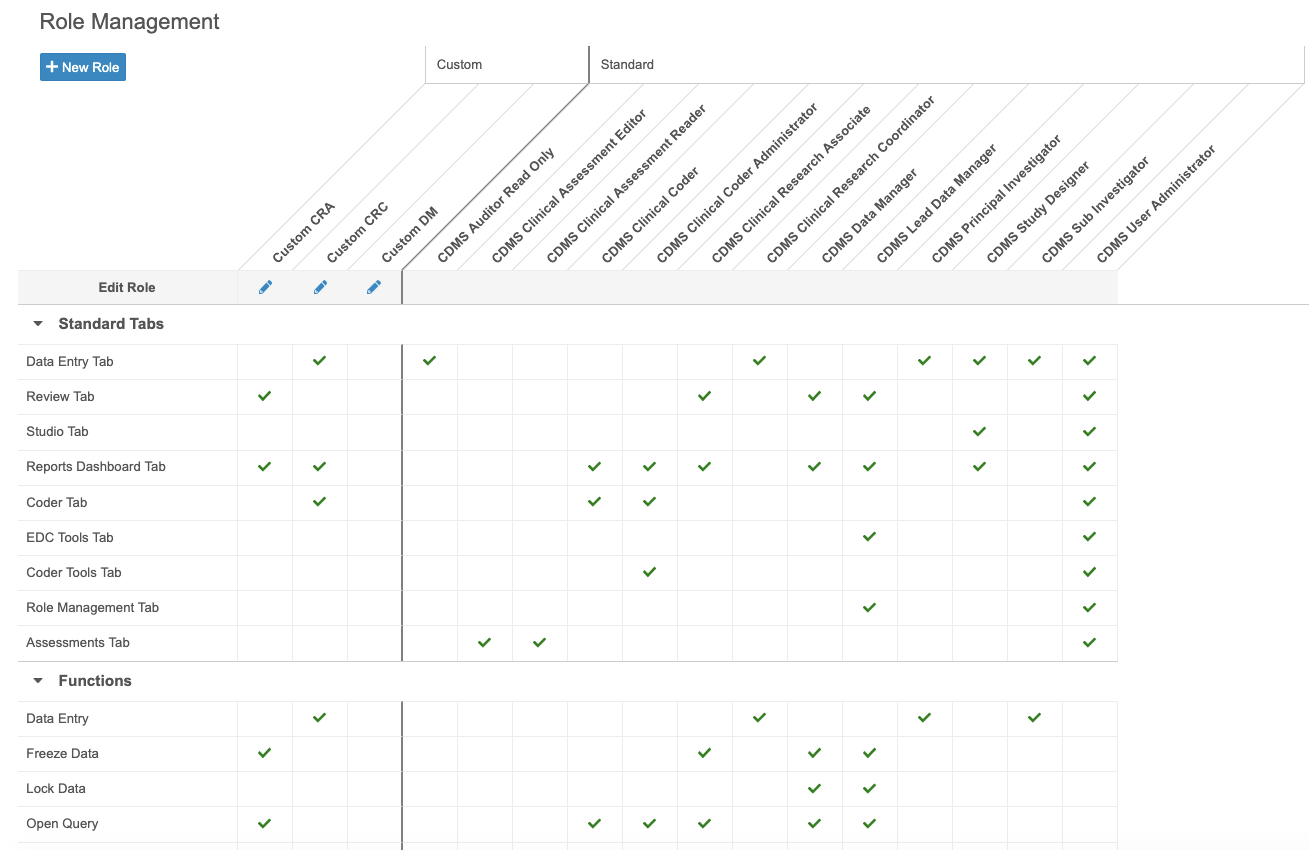What's New in 19R2
We are pleased to bring you CMDS in 19R2. Read about the new features below. You can find information on enabling new features in the 19R2 Feature Enablement Details.
For additional release documentation and 19R2 release details, see About the 19R2 Release.
CDMS
Vault CDMS Logo Branding
With this release, Vault now shows the Vault CDMS logo instead of the Vault EDC logo.
Data Entry
Allow Unknown Times
Date/Time and Time Item controls can now be configured to allow unknown times. Study designers can configure an Item to allow unknown Month, Day and Time; Day and Time; or Time to accept unknown values. When data entry users mark a Month and Day as unknown, Vault automatically sets the time as unknown. Users can also manually set the time as unknown by entering a “?” (question mark) in the time field. Unlike dates, Vault does not accept partial times; time values must be fully unknown.
Subject Deletion
Users with an Application Role that includes the Delete Casebook application role function can now delete accidentally created subject Casebooks, including all related records. This feature adds a new Delete Subject action in the casebook-level Actions menu. If configured, users can also select a Reason for subject deletion.
Vault only allows deletion of a subject casebook when the following conditions are true:
- All Events within the Casebook are in the Planned status.
- There is no Frozen or Locked data within the Casebook.
- There are no references to this subject from any custom object records in the vault.

|

|
Tabular View for Repeating Item Groups
Vault can now display repeating Item Groups in a tabular view in the Data Entry tab, once the Form is in the Submitted status. When viewing a repeating Item Group in tabular view, the data entry user will be able to view queries on Items within the group, see information about those queries, and open a dialog to interact all queries within the Item Group.
This feature adds the Display Format property to the Item Group Definition in Studio. Study designers can set this property to Form to use the existing repeating Item Group display, or set it to Grid to use the new tabular view. Tabular view is not available for repeating Item Groups containing more than sixteen (16) Items.
Notes
- Data entry users will not be able to enter data when viewing a repeating Item Group in tabular view.
- Review users will only see repeating Item Groups in tabular view when using View as Site. The existing vertical display in the Review tab allows for easier review and query response.
Casebook Creation Confirmation
With this release, Vault displays a confirmation dialog after a data entry user clicks + New Casebook in the Data Entry tab. This enhancement helps prevent the accidental creation of Casebooks if a user mistakenly clicks + New Casebook.
Data Review
Review Tab Enhancements
This release includes several enhancements to the Review tab:
- The Subject listing now includes Last Event and Next Event columns.
- The Event & Form List panel now highlights the current Event and Form that are open in the Content panel, including bolding the Event Name, Event Date, and Form Name, as well as emphasizing the status icons.
- We increased the View as Site dialog’s size to make it easier to view form data on longer forms.
- Vault now displays the current casebook version for a Subject in a tooltip on the Subject in the breadcrumb menu.
Manual Save for SDV & DMR in the Review Tab
Vault no longer autosaves SDV and DMR reviews. Instead, users must click the new Save button to save their reviews. We also introduced a Discard changes button to allow users to discard unsaved reviews. With this release, we also refreshed the Next Task navigation design.
Coder
Code WHODrug Forms on Indication & Route
If a WHODrug Form is configured to collect Indication and Route values, a coder administrator can now configure the Form to either use or not use Indication and Route for manual coding. When coding with Indication or Route is enabled, Vault displays the respective columns in the Listing page next to the Verbatim column. Coder Tools contains a setting to control this feature in Study Settings > Form Configuration.
Prioritize MedDRA Coding by Displaying a Seriousness Column
If a MedDRA Form collects a Seriousness value, a coder administrator can configure the form’s Listing page to display or not display the Seriousness column next to the Verbatim column. This feature allows coders to easily identify serious adverse events and prioritize them for coding. Coder Tools contains a setting to control this feature.
Dictionary Database
In preparation for future enhancements, we released new infrastructure such that any CDMS application vault or Safety application vault can remotely access MedDRA or WHODrug (B3 and C3) dictionary records, once the customer’s subscription to their dictionary is verified.
Vault can pull dictionary search results directly from the Dictionary Database. Vault can also perform upversioning and dictionary-based autocoding directly from the Dictionary Database.
New Dictionary Search with Enhancements
Now that dictionary records are available in the new Dictionary Database, we built the Dictionary Search algorithms in SQL. In this effort, we also introduced several enhancements. The enhancements include displaying only unique records in the Dictionary Search results, capturing all Preferred Name varieties of the same Drug Name, allowing up to 10 search terms in search phrases, and the ability to search all special characters.
Coder UI Enhancements
This release includes the following enhancements to the Listing page:
- Coders can now filter Code Requests by Query Status (Query to Site, Site Responded, Re-Queried Site, and Closed). By filtering out Code Requests with open queries, coders can focus their coding. Coders can also choose to only view Code Requests with open queries when making decisions about query responses and escalations with sites. As part of this enhancement. we renamed the Status filter as Coding Status to distinguish that filter from the new Query Status filter, and we updated the style of these filters to be consistent with other filters in Vault CDMS.
- Coder now has a master checkbox control in the Verbatim column header of the Listing page. When the checkbox displays as selected, it indicates that at least one Code Request is currently selected. Users can select this checkbox to select all Code Requests on the page at once, or they can deselect the checkbox to unselect all Code Requests.
- In the Coding panel, when a user hovers over a row, Vault now shows an outline where the Code and Code & Next buttons will display. This helps the user see where to hover to display those buttons.
Reports & Dashboards
Vault Coder Dashboard
Vault Coder users can now view high-level metrics for code assignments, coding progress, and query statuses from the new, standard Vault Coder Dashboard.
Studio
In this release, Studio is only available to a limited set of early adopter customers.
Review Plan Editor
Study designers can now access a specialized Review Plan Editor from Studio > Review Plans. With the Review Plan Editor, study designers can quickly and easily create and update SDV and DMR Review Plans for their Study. Users can select a single radio button to apply the Required mode to all Event Dates in a Study. From the Review Plan Editor, users can select Forms from the Driving panel. Vault opens that Form in the Form panel, where users can select the requirement mode for each Item on the Form. As part of this feature, we renamed the Not Available requirement mode to No Review.
In this release, the Review Plan Editor is limited to defining requirement modes at the form level, meaning that if a study reuses a Form multiple times, Vault applies the same review pattern to all instances of the Form.
This feature deprecates the Optional requirement mode. For existing, “legacy” studies where review plans include Optional items, Vault continues to display those settings within existing Review Plans, but users will no longer be able to select Optional for the Requirement Mode when creating or updating Review Plans.
Enable Forms for Coding from Studio
A CDMS Study Designer or other Studio user can now identify coding Forms and configure them in Studio so that they are enabled and integrated for coding within Coder. To configure a Form using this feature, a Studio user must identify the Verbatim field, and any other necessary supporting fields, such as Indication, Route, or Seriousness, and assign a dictionary release. They can now also identify which fields Vault will use to inform coding and autocoding (such as Indication and Route for WHODrug) and which fields should inform prioritization (such as Seriousness for MedDRA). They also have the option to assign a Synonym List and Stop List.
ODM Import & Export Includes Coder Study Settings
The ODM XML file in Studio now includes all Coder Study Settings, including the Therapeutic Area. Prior to this release, a coding administrator had to manually define those settings in each vault for a Study. With this enhancement, a coding administrator only needs to define their study-level settings once, and then Vault will automatically apply those settings whenever the study design is imported into another Study or into the same Study in another vault.
Manage Study Settings in Studio
Studio users can now manage study-level settings, including Subject ID generation settings and the Signature Definition, from the new Settings subtab in Studio. Prior to this release, Admins could only change these settings by editing multiple object records from Admin > Business Admin. This enhancement allows Studio users to manage these settings easily and from a single location.
Compare Versions Enhancements
With this release, we made the Excel™ file output for Compare Versions more informative and easy to read. The output file now contains multiple worksheets and options to add more granular detail to the report. We also improved the formatting, as well as adding a time and events schedule view, providing users with a clear impact assessment of design changes.
The Compare Versions report now includes the following information (by worksheet):
- Summary: High-level details about your casebook version, including the number of definitions that changed between the two versions.
- Schedule: All definition object records and their difference status (either Same or Modified) in the order that they appear in the study’s schedule, including multiple rows for reused definitions.
- Form Impact: Displays a row for each form in the study and a column for each event, with a marker indicating which events contain which forms.
- Detail: Displays all definition object records and their difference status. Each object record only displays once per study, even if reused.
- Item Group Defaults: Displays details about the Default Data configuration for each repeating Item Group and the difference status.
- Codelist and Unit: Displays all codelist and unit definitions in the study, their items, and their difference status.
- Rules: All Rules within the study, including rule configuration details and the difference status.
- Study Settings: Displays the study’s settings, including settings from the Study Configuration record and the study’s Signature Definition, and their difference status.
- Coding Configuration: Displays coding configuration details from Medical Coding Item Definition object records and their difference status.
- Views: Displays the View Set Definition configurations between the two studies and their difference status. Note that views comparison only compares views between different Studies as views aren’t versioned.
- Review: Displays review plan items, grouped by Review Plan, and their difference status.
Set Label in Creation Dialog
With this enhancement, Studio users can enter the Label value for a new design definition in the creation dialog. Vault automatically generates a Name value by converting the entered Label to lowercase and replacing any whitespace characters with underscores (_). Users can override the generated Name value if needed.
Ignore Casebook Versions in Import File
With this release, users can now import a different Study into their current Study and reset the file’s casebook version to the current casebook version. For example, if the import file contains Version 4 of the Deetoza, UAT study, a study designer can import that file into the production Deetoza study as Version 1 by selecting the Ignore import casebook version and add as current version checkbox.
EDC Tools
Availability: In the current release, this area of the application is only available to Veeva Services.
Import Sites
With this release, lead data managers can now create Sites in bulk. From EDC Tools > Sites, they can upload a CSV file of their Sites for import. Vault validates the records with the same validations used when creating Sites individually and displays any errors in a preview panel. Once the file has no errors, it is ready for import, and lead data managers can click Import to finish creating their Sites. This feature saves lead data managers time during site creation and the study validation process.
Amendment History
EDC Tools > Casebook Versions now includes an additional Amendment History subtab, which tracks historical runs of both prospective and retrospective amendments. Within Amendment History, lead data managers can review past amendments, including which Subjects and Sites were impacted, view summary and log files, and plan future amendments.
Site Review Plan Assignment
Vault uses Review Plans to apply targeted Source Data Verification (SDV) and Data Management Review (DMR) requirements to data collection forms and items. Different Sites can use different Review Plans. For example, a more mature clinical site where data collection tends to be of higher quality, can have a Review Plan with fewer forms requiring SDV and DMR. A site that is conducting a clinical trial for the first time may need to perform SDV on all of their forms. Once a study designer creates a Review Plan in Studio, a lead data manager can assign it to a Site from EDC Tools.
From EDC Tools > Review Plan Assignment, the lead data manager can define a default Review Plan, which Vault assigns to Sites at creation. Then they can also define an override plan, which Vault applies based on preset subject selection criteria. Users can also manually assign the override plan on a subject-by-subject basis. Users can also change a site’s assigned Review Plan at any time during the study and run the SDV or DMR re-assignment job to apply the new plan retrospectively to all Subjects at a Site.
Transfer a Subject to a Different Site
Lead data managers can now transfer a Subject from one Site to another Site within the same Study and Study Country, as well as provide a reason for the subject’s transfer. Subject transfer is permanent. Vault does not change the Review Plan assigned to a subject even if the transfer moves the subject to a Site with a different template Review Plan. Lead data managers can update the subject’s assigned Review Plan if needed.
Retrospective Amendment & Study Update Restriction Changes
With this release, we updated the allowed changes between casebook versions and during retrospective amendments.
The following changes are now allowed:
- Changes to the event window
- Increasing or decreasing the Repeat Maximum of a repeating Event Group, Form, or Item Group
The following changes are now not allowed:
- Changes to a design definition record’s Name
- Updating the Allow Unknowns selection to an option that allows fewer unknowns than the previous (for example, you can’t switch from Date and Time to Time)
Audit Trail Export Includes Deleted Records
When records are deleted in Vault CDMS, for example, due to a casebook amendment or subject deletion, the Audit Trail Export job, scheduled from EDC Tools > Jobs, now includes those audit trail entries.
EDC Tools Enhancements
With this release, we made the following enhancements to EDC Tools:
Run the Query Rules Job in Preview Mode
Lead data managers can now run a Query Rules job in preview mode and receive the result in an email. Running this job in preview mode allows the lead data manager to review the queries that Vault will create and perform any planning tasks based on that review before running the job.
Add Cross-Domain Users with User Import
User administrators can now add cross-vault users into their CDMS vault via the User Import process. Prior to this release, user administrators had to add cross-domain users individually.
Edit Cross-Domain Users
With this release, user administrators can now edit the Security Profile and Study Access of previously created cross-vault or cross-domain users from EDC Tools > Users.
Relabeled “Country” Column as “Study Country” in EDC Tools > Sites
We relabeled the Country column in EDC Tools > Sites to Study Country to reflect the data shown in this field (the referenced Study Country object record).
Security
Custom Role Management
With this release, CDMS Lead Data Managers and CDMS User Administrators can now easily create new, custom Study Roles (formerly labeled as Application Roles), as well as copy existing and standard Study Roles, from the new Tools > Role Management area. They can also view existing custom and standard Study Roles, and the functional permissions associated with each, from this area. A Study Role represents a group of functional permissions, combining Application Roles and Security Profiles into a single entity.
As part of this feature, lead data managers and user administrators now only select a Study Role when creating a new User from EDC Tools > Users, instead of selecting an Application Role and a Security Profile.
In this release, Vault only supports custom Study Roles with standard tabs and functional permissions. Custom objects and tabs are not supported in this release.


